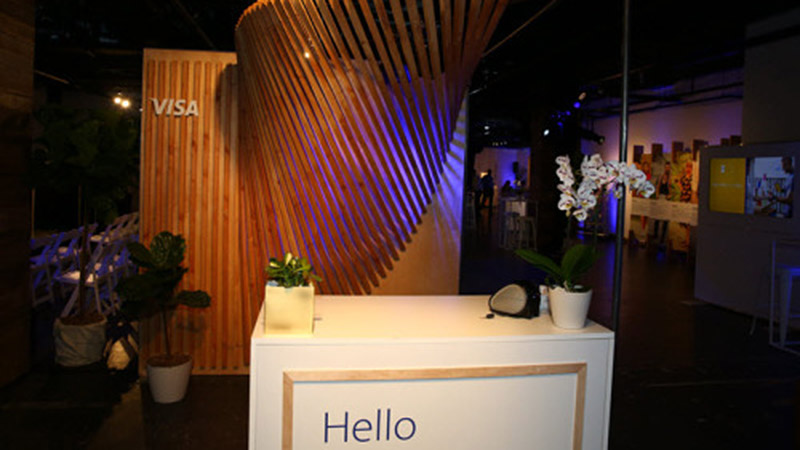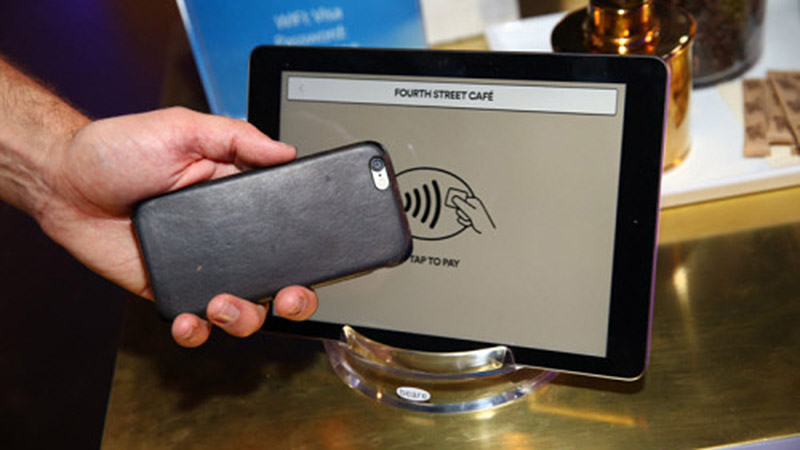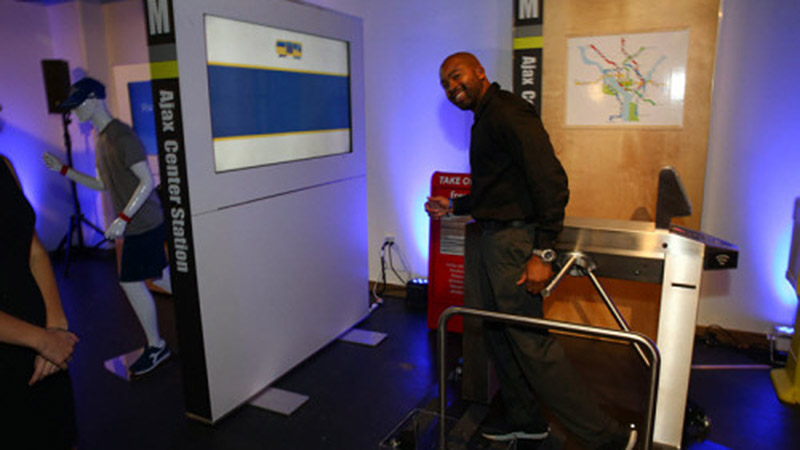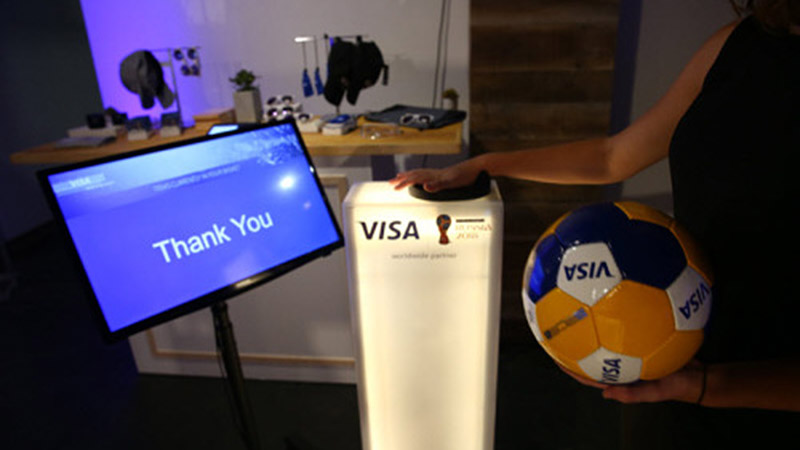Visa opens Innovation Station in Washington D.C.

This month, Visa officially opened our pop-up D.C. Innovation Studio, designed to showcase our cutting-edge technology and demonstrate how we are making payments faster, more convenient, and more secure. The Innovation Station will be open through July.
The interior of the studio was designed to follow a connected consumer named “Kate ” through her busy day—highlighting the ways that fast and secure payments can save her time and stress whether she is dining out, commuting, or shopping.
Order ahead and pay
When orderingahead and contactless payments are available at a Merchant, visitors can avoid waiting in a long line. For example, Kate orders cookies at an order-ahead kiosk, paying simply by tapping her mobile phone. This is an example of contactless payment technology, which is taking off in economies around the world. Order and checkout experiences like these help customers like Kate manage their time and merchants like the café manage the lines. Although not yet widely adopted in the U.S., contactless cards, once introduced into the market, are embraced quickly by consumers, who enjoy the fast, simple and secure way of tapping to pay.

Mobile Payments in Public Transit
Wouldn’t it be nice if you never had to search for a transit card again, or get stuck behind a gate when because you forgot to reload your card?
Many public transit operators (PTOs) are moving away from cumbersome paper ticketing and reloadable systems to more-effective and -efficient contactless payments on buses and trains. These new systems reduce ticketing overhead, make commuting a breeze for people like Kate, and boost ridership. Kate doesn’t have to search for her transit card to get on the subway—she simply taps her bank card to pass through the gates.
Cities around the world have started to introduce contactless payments as a convenient and secure way to pay for travel. New York, Sydney, Miami and Boston have all announced that they plan to introduce contactless payments in the coming years.

RFID + Biometrics
New payment technologies are also now part of everyday retail experiences. So when Kate is ready to buy a soccer ball at a sporting goods store, she shops and pays quickly thanks to RFID technology.
Here’s how it works: RFID technology is trained to recognize inventory in the store. When an RFID tag is scanned, there is a visual representation of what is being purchased on a screen.
Kate scans the RFID tag for the soccer ball and sees the visual image of it on the screen. She can then use several ways to identify and authenticate who she is and pay with a stored payment account. Common ways to authenticate include iris scans, voice recognition or even vein scanning.

Although Kate isn’t a “real” person, the way she shops and pays throughout her day is what we can expect to see in the near future. Visa is continuing to work with financial institutions, merchants and our partners to accelerate innovation and help secure the payments ecosystem.
To learn more about the D.C. Innovation Station, please email [email protected]